In the Moment:
Michael Frye's Landscape Photography Blog
by Michael Frye | Nov 24, 2024 | Light and Weather
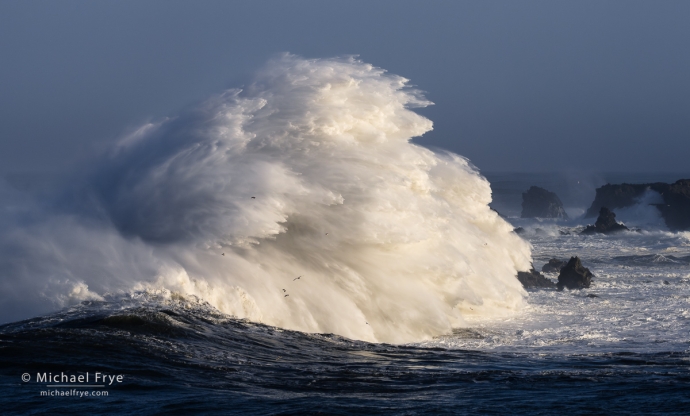
Breaking wave, Oregon Coast (from last Wednesday morning). This is one of the largest wave splashes I’ve ever seen. Note the gulls in front of the wave (you can click on this to see it larger). 192mm, 1/500 sec. at f/16, ISO 640.
After our Oregon Coast workshop Claudia and I hung around for a few more days, since we love this area, and the weather models were showing that more big waves were possible.
And I’m glad we stayed, as we did see some large waves last Monday, and then even bigger ones on Wednesday, after the “bomb cyclone” brought winds and heavy rain to the area on Tuesday and Tuesday night.
(more…)
by Michael Frye | Nov 17, 2024 | Light and Weather, Travels and Stories
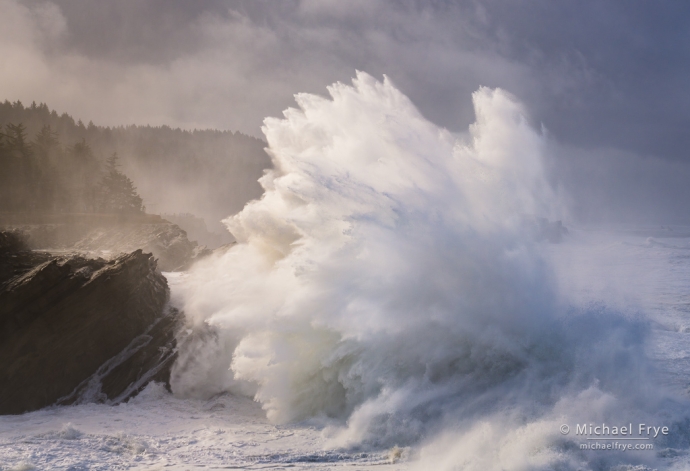
Crashing wave on a foggy morning, Oregon Coast
We just finished another edition of our Oregon Coast workshop, and once again had a great time. We had a really nice group of people, which always makes it more fun for everyone. And we encountered some wonderfully stormy weather.
The forecasts for the workshop showed a series of storms, and rain every day. But that didn’t mean nonstop rain. I knew there would be breaks, and those breaks could generate some interesting light.
(more…)
by Michael Frye | Nov 7, 2024 | Light and Weather, Travels and Stories
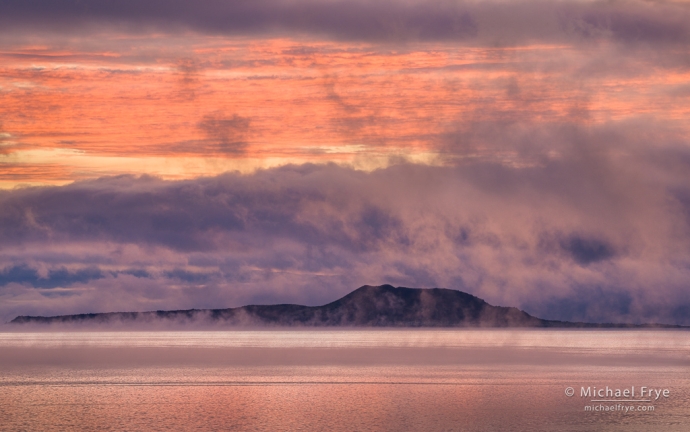
Fog and Negit Island, sunrise, Mono Lake, California
On our way home from Montana last month, Claudia and I stopped for the night in Lee Vining (near Mono Lake, just east of Yosemite). We met our friends Charlotte and Gary Gibb there, and had dinner with them at the Whoa Nellie Deli.
It was raining – the first significant weather we’d encountered on our whole trip. Then, just before sunset, the rain stopped, and we saw signs of clearing, so we rushed out to the shore of Mono Lake to catch the sunset. While we didn’t see the sun breaking through, we caught a nice sunset glow over the lake:
(more…)
by Michael Frye | Oct 20, 2024 | Night Photography, Travels and Stories
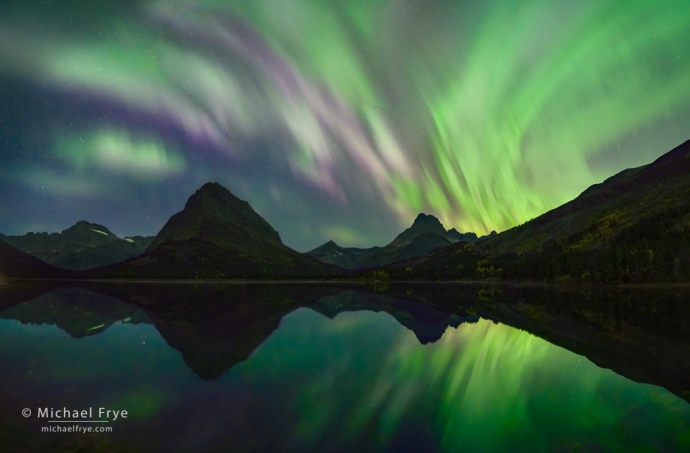
Aurora reflected in Swiftcurrent Lake, Glacier NP, Montana. The aurora was dancing and shimmering at an incredible rate of speed when I made this photo. This is a stitched panorama; four frames, with the camera and 20mm lens turned vertically, blended with Lightroom’s Panorama Merge, and then run through Lightroom’s Denoise. I wasn’t sure if stitched panoramas would work with the aurora moving so quickly, but luckily they did (most of the time). Each frame was 1 second at f/1.8, ISO 6400.
In late September Claudia and I made our annual pilgrimage to the Millpond Music Festival in Bishop, California. Then we drove to Kanab, Utah, for the Nightscaper conference – which turned out to be a super fun event. Kudos to the National Parks at Night team (Lance Keimig, Chris Nicholson, Tim Cooper, Gabriel Biderman, and Matt Hill) for making everything run so smoothly!
After the conference, we planned to just go wherever things looked interesting. We decided to head to southwest Colorado to look for fall color. But as soon as we arrived I started getting alerts about increased solar activity, and the possibility of seeing auroras at mid latitudes.
(more…)
by Michael Frye | Oct 13, 2024 | Composition, Light and Weather
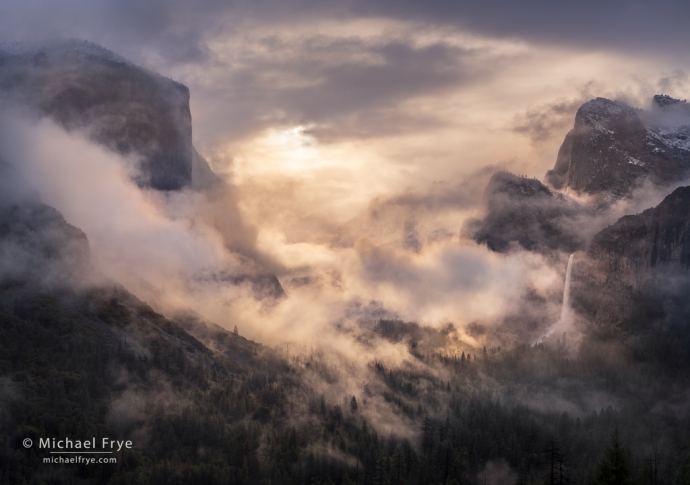
Misty sunrise from Tunnel View, Yosemite NP, California. Where does your eye go in this photograph? Here the brightest areas are in the middle of the image, while the edges are darker, helping to draw the eye into the picture, rather than out of the frame.
We launched our first online workshop about composition about 18 months ago, and then more recently added additional online workshops focused on light. I picked these topics because I think they are, hands down, the two most important aspects of photography.
In photography, nothing is more fundamental than light. When we press the shutter, we record the light falling on the film or sensor at that moment. Light is literally the medium we’re working with, and the quality of the light has everything to do with the mood and message of the photograph.
(more…)
by Michael Frye | Sep 15, 2024 | Travels and Stories, Vision and Creativity
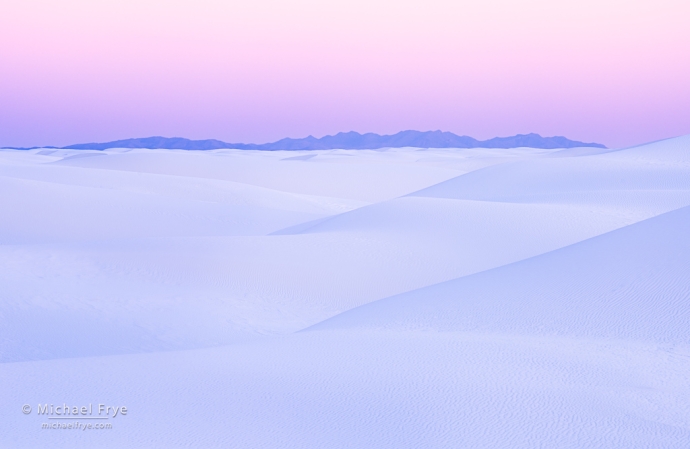
Sand clouds, White Sands NP, New Mexico
Back in April, on our way to view the solar eclipse in Arkansas, Claudia and I stopped to photograph sand dunes in southern California and New Mexico.
The difference between those two locations was striking. The California dunes were in a remote corner of the Mojave Desert, and we saw only a few other people there. Footprints were scarce. White Sands National Park in New Mexico was teeming with visitors, including many people sliding down steep-sided dunes with snow-sliding devices. While it was nice to see people enjoying the dunes, you had to hike quite a distance to photograph footprint-free sand.
(more…)
by Michael Frye | Sep 5, 2024 | Announcements
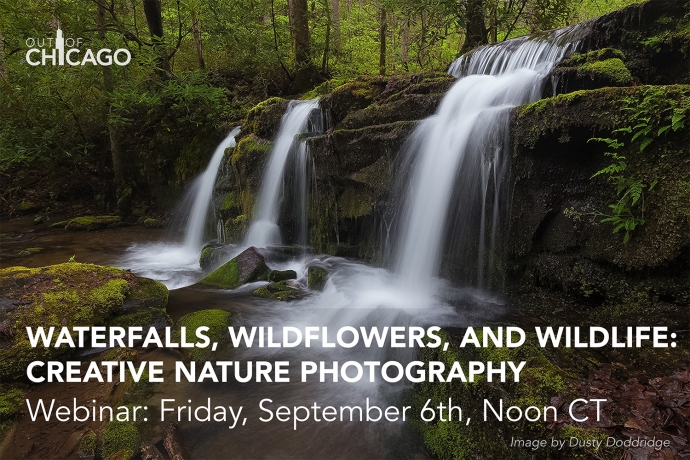
Tomorrow, September 6th, at 1:00 p.m. Eastern Time, 10:00 a.m. Pacific Time, I’ll be one of the presenters in a free webinar hosted by the Out of Chicago team called Waterfalls, Wildflowers, and Wildlife. I’ll be joining several other instructors from next year’s Out of Great Smoky Mountains conference for this webinar, including Chrissy Donadi, Michele Sons, Dusty Doddridge, Stephanie Johnson, Kurt Budliger, and John Putnam, and we’ll each be sharing ideas and tips about photographing waterfalls, wildflowers, or wildlife.
The webinar is free, but you’ll need to register in advance to attend live:
Click here to register for the webinar.
(more…)
by Michael Frye | Sep 1, 2024 | Night Photography
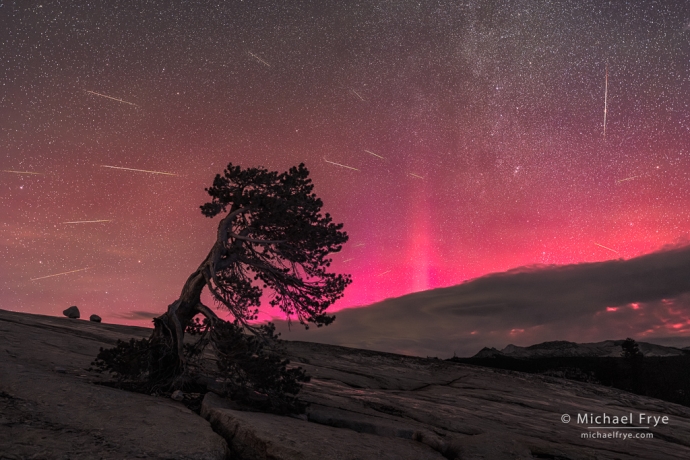
Aurora, Perseid meteors, and lodgepole pine, August 11-12, Yosemite NP, California. This image shows the Aurora Borealis, plus Perseid meteors captured over the course of about two hours.
The night of August 11th was the peak of the Perseid meteor shower. Claudia and I marked this date on our mental calendars, thinking it might be nice to head up to the Yosemite high country and look at some meteors.
As the date approached, solar activity increased, bringing a heightened chance of viewing the aurora – possibly even at our southerly location in central California. The combination of meteors and aurora certainly seemed intriguing. And forecasts indicated that the night of the 11th and 12th was the most likely night to see the aurora.
(more…)
by Michael Frye | Aug 29, 2024 | Announcements, Night Photography
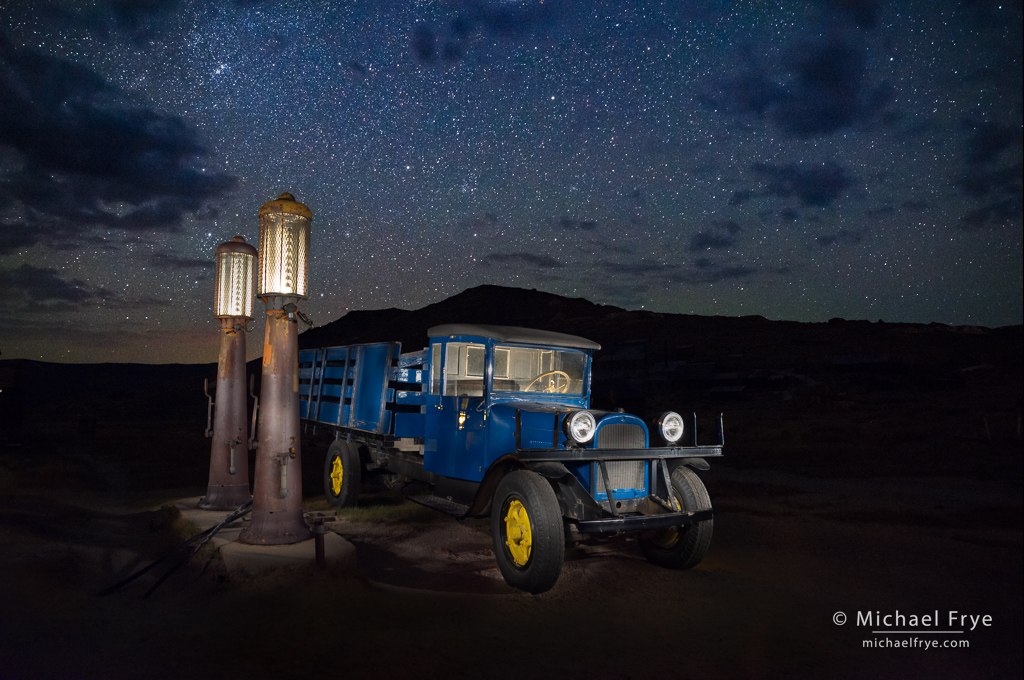
1927 Dodge Graham with gas pumps at night, Bodie State Historic Park, California. In my presentation Complex Lighting With One Flashlight I’ll show how to create rich, complex, sophisticated lighting with just one flashlight – as I did in this photo, lighting the old truck and gas pumps from multiple angles with just one light.
August 31st is the last day to get the early-bird discount on the Nightscaper Photo Conference!
This conference, focused on night photography, takes place September 26-29 in Kanab, Utah. I’ll be making two presentations at this event: Complex Lighting With One Flashlight, and Nighttime Sequences. And I’ll be teaching alongside a stellar lineup of other presenters, including Lance Keimig, Royce Bair, Jess Santos, Matt Hill, Tim Cooper, Rafael Pons, Katrina Brown, and a bunch more. Topics include star trails, auroras, printing, panoramas, deep-space astrophotography, Photoshop selections and masks, planning with PhotoPills – too many more to list them all here, but you can see all the details on the Nightscaper website:
(more…)
by Michael Frye | Aug 23, 2024 | Announcements
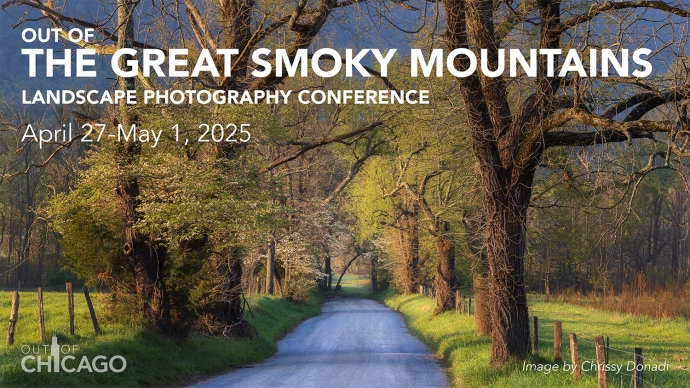
I’m excited to be joining the Out of Chicago team for another photo conference – this time in the Great Smokies!
I love photographing the kind of intimate landscapes this park abounds in during the spring – creeks, cascades, forests, blooming dogwoods, and misty ridges. I’m looking forward to photographing these scenes, and to helping participants find their own visions of this beautiful area.
(more…)


















